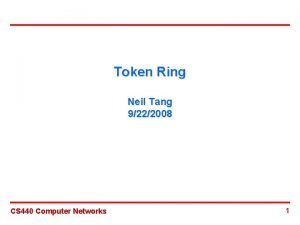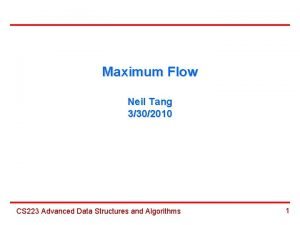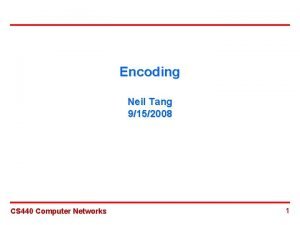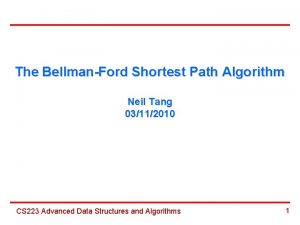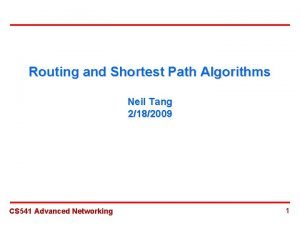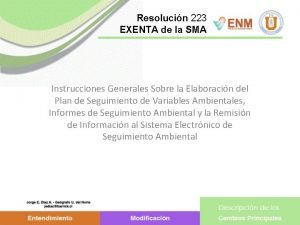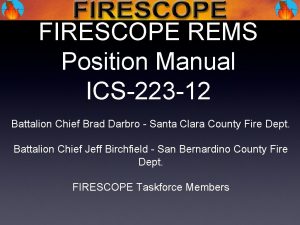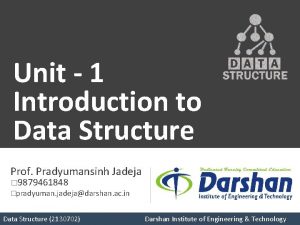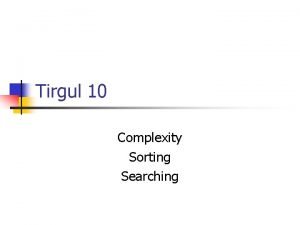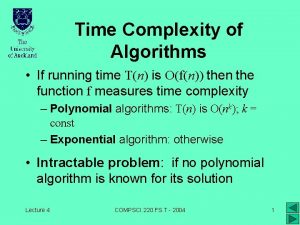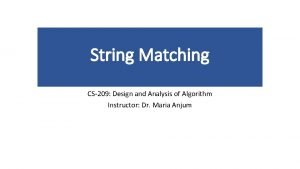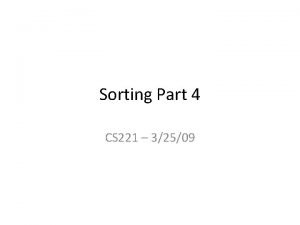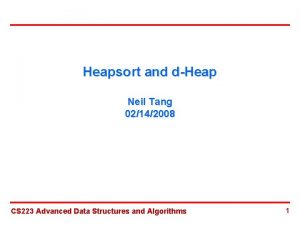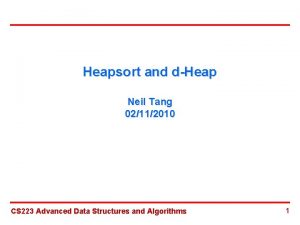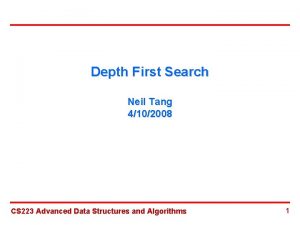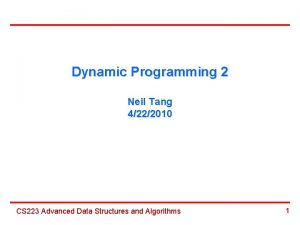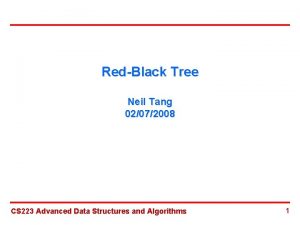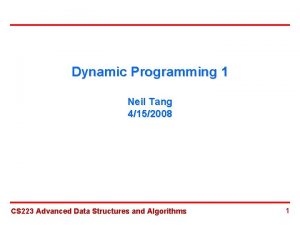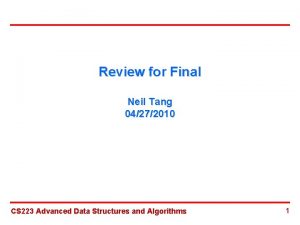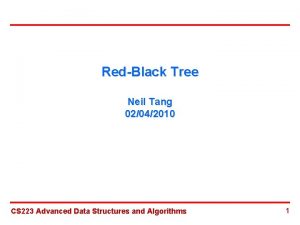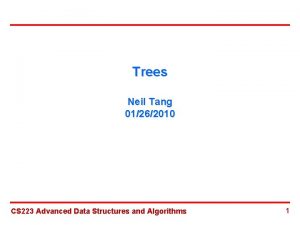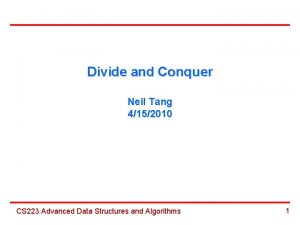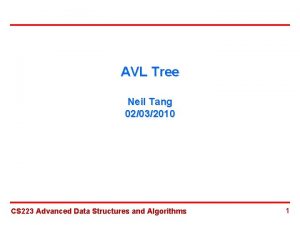Time Complexity Analysis Neil Tang 01192010 CS 223

















- Slides: 17

Time Complexity Analysis Neil Tang 01/19/2010 CS 223 Advanced Data Structures and Algorithms 1

Outline Ø Algorithm and Time Complexity Ø Asymptotic Notations Ø Examples CS 223 Advanced Data Structures and Algorithms 2

Algorithm and Complexity Ø Algorithm: A clearly specified set of instructions to be followed to solve a problem. Ø Characteristics of an algorithm: - input - output - stop on any input Ø Time complexity: The number of operations required. Best vs. average vs. worst case complexity. Ø Space complexity: The amount of memory required. CS 223 Advanced Data Structures and Algorithms 3

Asymptotic Notations Ø T(N) = O(f(N)) if there exist positive constants c and n 0, s. t. T(N) cf(N) when N n 0 Ø T(N) = (g(N)) if there exist positive constants c and n 0, s. t. T(N) cg(N) when N n 0 Ø T(N) = (h(N)) iff T(N) = O(h(N)) and T(N) = (h(N)) Ø T(N) = o(p(N)) if T(N) = O(p(N)) and T(N) (p(N)) Ø O-notation is used to determine an upper bound on the order of growth of a function. Ø -notation is used to determine a lower bound on the order of growth of a function. CS 223 Advanced Data Structures and Algorithms 4

Properties Ø Rule 1: If T 1(N) = O(f(N)), T 2(N) = O(g(N)) - T 1(N) + T 2(N) = O(f(N)+g(N)) - T 1(N) * T 2(N) = O(f(N)*g(N)) Ø Rule 2: If T(N) is a polynomial of degree k, T(N) = (Nk). Ø Rule 3: logk. N = O(N) for any constant k. CS 223 Advanced Data Structures and Algorithms 5

Examples log. N = O(N), N = O(N 2), N 2 = O(N 3), N 3 = O(2 N); N 3 = (N 2); N 4 + 1000 N = (N 4); 1 + 2 +. . . + N = O(N 2). CS 223 Advanced Data Structures and Algorithms 6

Running Time The running time of algorithms for the Max Subsequence Sum problem (in sec) CS 223 Advanced Data Structures and Algorithms 7

Running Time CS 223 Advanced Data Structures and Algorithms 8

Running Time Calculation Ø The simple example in pp. 35 Ø Rule 1: for loop Ø Rule 2: Nested loops e. g. , for(…) Ø Rule 3: Consecutive statements e. g. , for(…) Ø Rule 4: If/else Ø Rule 5: Recursion: master method CS 223 Advanced Data Structures and Algorithms 9

The Max Subsequence Sum Problem Given integers A 1, A 2, …, AN, find the max value of the sum of a subsequence (return 0 if all integers are negative). CS 223 Advanced Data Structures and Algorithms 10

Algorithm 1 T(N) = Θ(N 3) CS 223 Advanced Data Structures and Algorithms 11

Algorithm 2 T(N) = O(N 2) CS 223 Advanced Data Structures and Algorithms 12

CS 223 Advanced Data Structures and Algorithms 13

Algorithm 3 T(N) = 2 T(N/2) + N T(N) = (Nlog. N) CS 223 Advanced Data Structures and Algorithms 14

Algorithm 4 T(N) = (N) CS 223 Advanced Data Structures and Algorithms 15

Binary Search Algorithm T(N) = T(N/2)+1 -> T(N) = (log. N) CS 223 Advanced Data Structures and Algorithms 16

Verify Your Analysis CS 223 Advanced Data Structures and Algorithms 17
 Tang song menu
Tang song menu Time space complexity
Time space complexity Neil tang
Neil tang Color 3302010
Color 3302010 Neil tang
Neil tang Distributed bellman ford
Distributed bellman ford Neil tang
Neil tang Neil tang
Neil tang Dl11cd
Dl11cd Resolución 223 sma
Resolución 223 sma Exord server
Exord server Ics 223-12
Ics 223-12 How to calculate time complexity in data structure
How to calculate time complexity in data structure Blind search algorithm example
Blind search algorithm example Time complexity of ternary search
Time complexity of ternary search Running time table
Running time table Knuth morris pratt algorithm time complexity
Knuth morris pratt algorithm time complexity Heap sort worst case time complexity
Heap sort worst case time complexity


